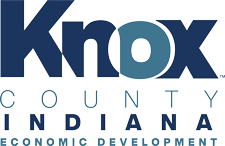Reprinted with permission from the Vincennes Sun-Commercial newspaper
October 17, 2023
Indiana’s second Regional Economic Acceleration and Development Initiative — better known as READI 2.0 — is in motion, Gov. Eric Holcomb announced Tuesday.
Hoosier leaders want the $500 million grant-loan program to enable new projects boosting the state’s quality of life, place and opportunity. And it’s time to start readying proposals.
“Innovation knows no boundaries and there’s no limit to what can be accomplished when we work together to better the lives of Hoosiers,” Holcomb said in a news release.
“This transformative program will fund projects that lean into a region’s strengths while building community gathering places, accessible parks, performing arts centers and expanding the trail system that will have generational impact across each region and with every person who visits our great state,” he continued.
READI 2.0’s 15 regions should begin developing their funding proposals this month, according to a timeline the administration released Tuesday. They’ll have until late February.
Meanwhile, the Indiana Economic Development Corp. (IEDC), the quasi-public agency administering the program, will hold forums and visit the regions to discuss their previous investments and future plans.
The IEDC expects its board to meet in April to approve investment commitments and regional allocations. In May, the entity plans to start coordinating with regions to identify specific projects for investment. The maximum award per region is $75 million, an increase from the previous cap of $50 million.
READI has been a signature policy of Holcomb’s administration. The outgoing governor — he’s term-limited — launched the program in 2021.
The 17 regions in READI 1.0 have been awarded $487 million of the original $500 million appropriation, according to the news release. It’s going toward 361 projects and programs.
And the state’s money is backed up by $12.2 billion in public, private and nonprofit funds. The administration said every state dollar averaged a $26 match during READI’s first round.
Projects highlighted on READI’s website include community, sports and early learning centers; housing and riverfront developments; innovation and technology projects. Leaders maintain high hopes for the next round.
“In Indiana, there is no greater priority for us as leaders than to work in unison to improve Indiana’s standing as the best location to live, work, play, study and stay,” Holcomb said.
Local efforts Chris Pfaff, president of Knox County Indiana Economic Development, in July told the county commissioners that plans are well underway as the Indiana First Region, a 5-county area of which Knox County is a part, looks to seize even more monies as part of the state’s READI 2.0 program.
A larger group of locals are involved in the process, Pfaff said, naming off several members of a new steering committee looking to narrow down the scope of projects in which Knox County may be interested in pursuing.
Pfaff explained that there have, however, already been stipulations placed upon the kind of projects for which READI regions can apply for funds.
For instance, applications must be limited to “only physical things,” he told the commissioners, specifically infrastructure projects, “brick-and-mortar” buildings, he said.
“Program dollars will not be a part of this next round,” he said in July.
More than $5 million was funneled into Knox County as part of Indiana First’s initial, successful READI application.
After months of toiling, members of a regional planning committee prioritized a handful of projects to receive the $15 million allocated to Indiana First — a partnership between Knox, Pike, Spencer, Perry and Harrison counties.
Among them were three for Knox County, including money to bolster a multi-family housing development planned for the city’s east side, money for nurse training equipment at Good Samaritan and funds to be part of an incentive package being offered to PolyPlus, a battery manufacturer based in California.
Combined, the three projects equated to a $5.6 million in READI investment.
The state’s READI program last spring considered applications from 17 regions.
Among them, too, was the Wabash River Regional Development Authority, of which Vincennes University is a part, and last summer officials with it announced their own list of priorities for the some $20 million granted to that region.
The Wabash River RDA is a long-standing partnership in West Central Indiana, including Vigo, Parke, Sullivan, Clay, Vermillion and Knox County, specifically VU.
Included on that priority list is $2 million toward the construction of a visitors center for Grouseland, home to the 9th U.S. President and governor of the Indiana Territory, William Henry Harrison.
Also on list of the Wabash River RDA’s READI priorities was $100,000 for VU’s Design and Innovation Studios project, a collaboration with local elementary- and middle school-aged children to provide exposure to STEM careers.
Pfaff said as the regions narrow the scope of their READI 2.0 applications, officials with the Indiana Economic Development Corp. will again visit all 17 regions, sitting down and discussing their strategies for growth.
The necessary match dollars will be just like the first round of READI, he went on to explain, meaning every dollar has to be matched with local dollars and a good amount of private investment.
For every dollar granted by READI, there must be a dollar in local funds and $4 in private investment.
Several stakeholders have come to the table to participate this next time around, Pfaff said, indicating that the steering committee has representatives from the county, cities of Vincennes and Bicknell, the Pantheon, Vincennes University, Good Samaritan, Vincennes Water Utilities, the Knox County Chamber of Commerce and more.
And they’ve hired a professional consultant to guide them along the way.
